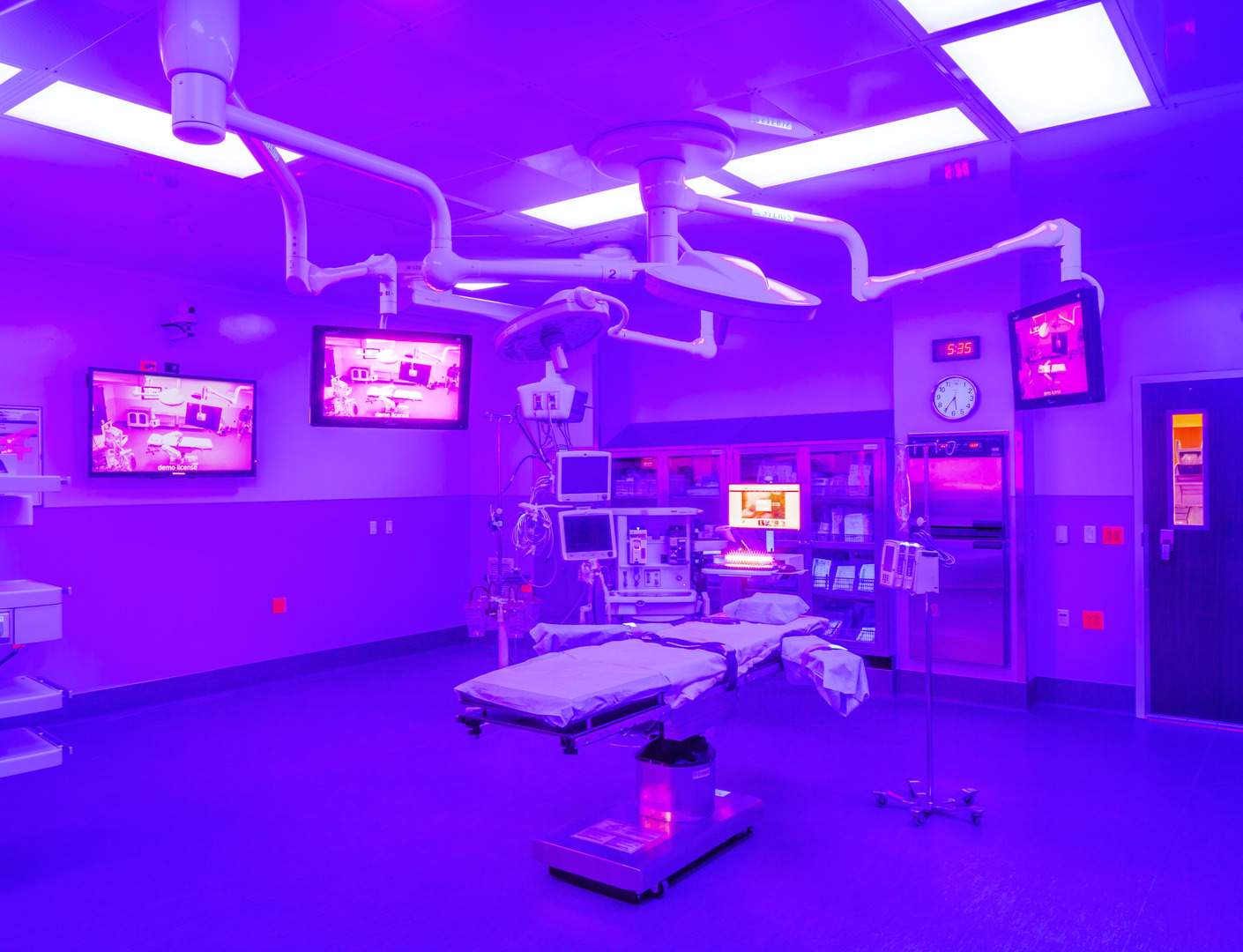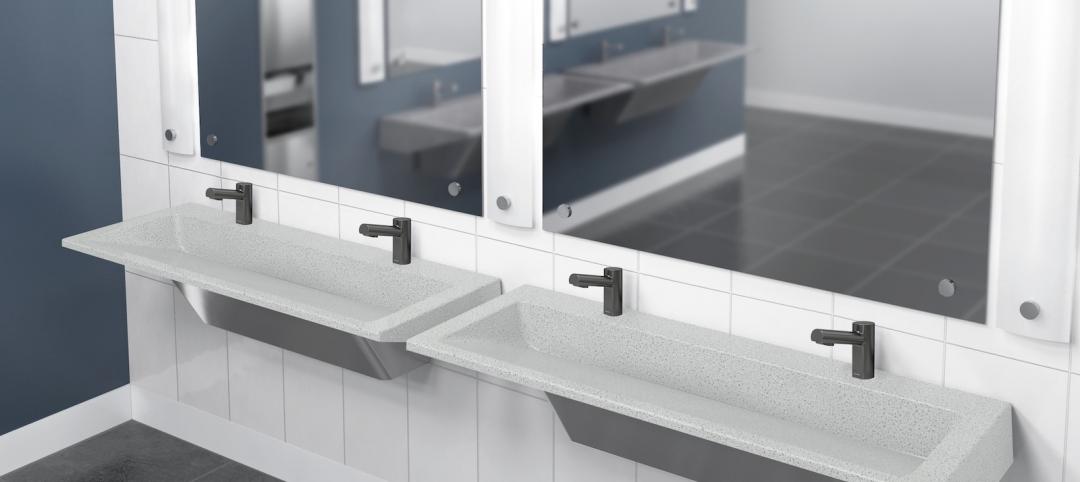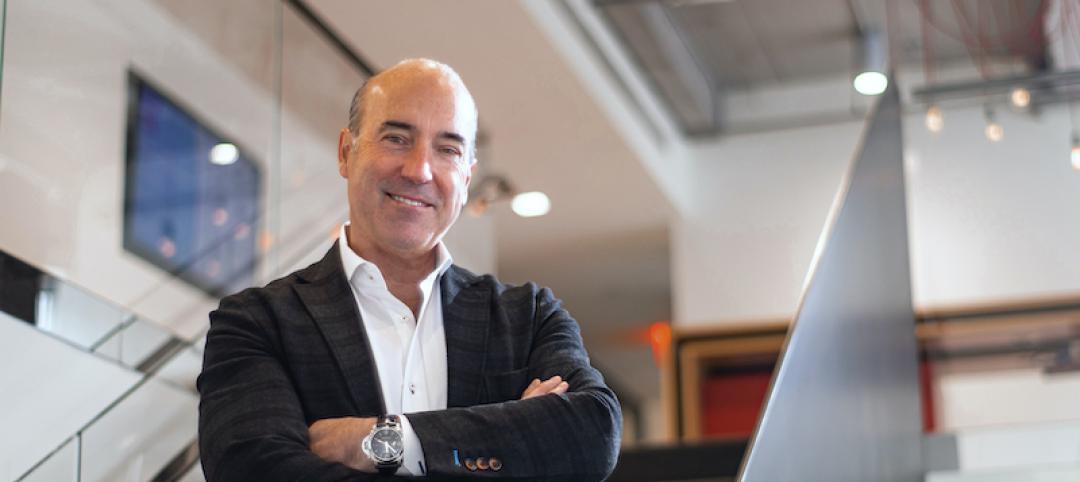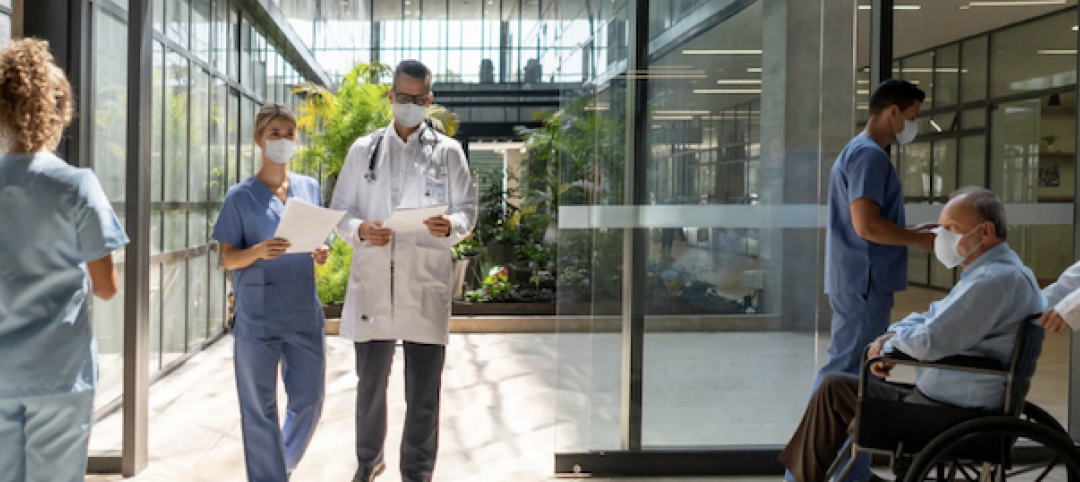The World Health Organization declared the coronavirus outbreak a pandemic on March 11, and by the first week of April, there was a nearly 80% decline in occupancy for hotels in the U.S., according to the hospitality analytics company STR. That same week, the National Restaurant Association estimated that 110,000 restaurants could close within the following 30 days, on top of the 30,000 dining places that had already shuttered. By the end of May, more than 40 million Americans had filed unemployment claims over the previous 10 weeks.
“It’s impossible not to wonder about the financial condition of some of our clients,” says David Levo, Principal and Higher Ed Practice Leader with Perkins Eastman, whom BD+C interviewed with Carisma Koenig, AIA, Principal and Associate Higher Ed Practice Leader, and Alan Schlossberg, AIA, Executive Director and COO. “There are 5,500 higher education institutions in the U.S. How many will be around a year from now? The survivors will need greater intensity about their sense of place.”
Even as cities and states started reopening their economies in late April and early May, it became clear that the virus could have broader, longer-term implications for how people work and congregate, and how businesses and buildings operate. At least until a vaccine or effective therapy emerges, offices, stadiums, schools, and other places—including construction sites—where people gather in large numbers need to figure out new ways to keep workers and patrons safe.
For example, reopened jobsites in Manhattan found workers disinfecting their tools, washing their hands at newly installed stations, and using thermal scanners to take their temperatures, according to a report published in the New York Times.
BD+C contacted 40 AEC and commercial real estate firms to get their experts’ thoughts about how their industry might come out of the pandemic. They were, in the main, cautiously optimistic, despite having seen projects delayed or postponed.
“This is a remarkable time for the industry and the economy, which will require imagination,” says Lamar Wakefield, Principal at Nelson Worldwide.
Some firms even saw opportunities to re-examine preconceived notions about building practices and codes that, in some cases, have been etched in stone for decades.
AEC firms provide consultation and ‘clairvoyance’ amid the coronavirus pandemic
The coronavirus’ impact will affect businesses in small and large ways, these executives stated. Some healthcare systems that scrambled desperately during the pandemic for equipment and protective wear would strike deals with suppliers to stockpile products for use during emergencies, predicted Jim Crabb, PE, LEED AP, Principal with the MEP engineering firm Mazzetti.
Colleges and universities might need to spread out students in dorms, which could require transforming double-bed rooms into singles, says Chris Purdy, AIA, LEED AP, Vice President and Higher Ed Practice Director with SmithGroup.
The most immediate change for many AEC firms could start within their own organizations and the degree to which remote working is sustained. The AE firm Fanning Howey found that, even with 96 employees in three offices working from home, it was able to move forward on $800 million in projects, says William Payne, AIA, LEED AP, the firm’s CEO. This was accomplished through virtual collaborations via Zoom-enabled all-staff meetings and after-hours get-togethers.
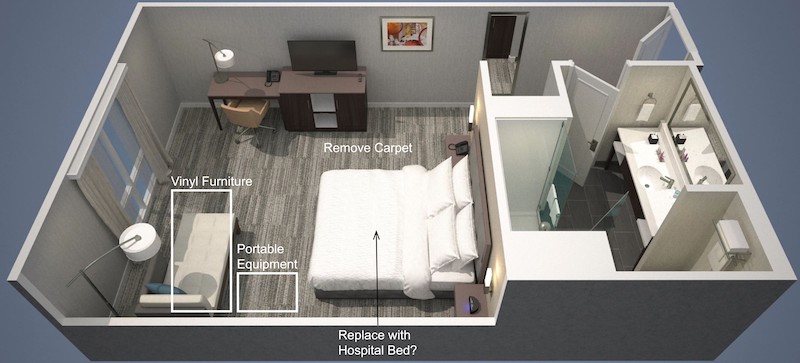
Several AEC firms came up with plans to adapt rooms in buildings like convention centers and college dorms into alternate patient care units. Leo A Daly’s Hotel2Hospital prototype includes three models for transforming empty hotel rooms into makeshift hospital rooms, based on the patient’s acuity.
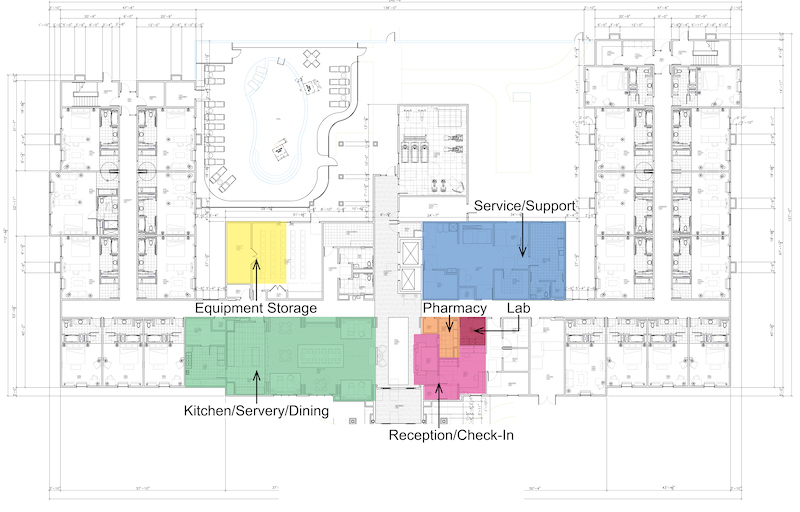
Bala Consulting Engineers had as many as 180 employees on a teleconference call without a hitch, says Charles Kensky, PE, LEED AP, Executive Vice President and COVID-19 Research Leader. He adds that the company conducted weekly virtual town halls during the lockdown.
Given how this pandemic caught almost everyone by surprise, clients will expect a lot more from their AEC partners going forward. “They want us to be clairvoyant,” laughs one AEC source. “There is an expectation for speed,” adds Jack Weber, IIDA, MCR, LEED AP, Senior Vice President and Design Principal–Interior Design, Workplace with Gresham Smith.
There will also be an expectation of action. “When clients say changes need to be made, these things will have to get done, and not just write a paper about them,” quips Nolan Rome, PE, Senior Vice President and Healthcare Practice Leader with WSP USA.
Lou Cornell, WSP USA’s CEO, spoke of his firm’s “future ready” approach that encourages customers to consider projects with eyes on safety and health. To be prepared for the next crisis, clients “have to build a strategic plan. Our goal is to be part of that conversation,” says Cornell.
COVID-19 spurs guidance revisions on building design
Following the virus’ outbreak and the fear that hospitals would be overwhelmed with infected patients, regulations were relaxed to allow alternate patient care facilities to be installed within existing structures like convention centers and hotels, or erected
on hospital parking lots.
Codes and competition dictate what developers and owners will accept, says Angie Lee, AIA, FAIA, IIDA, Vice President and Global Sector Leader–Office Workplace with Stantec. The virus might be the impetus that triggers changes or amendments to codes and guidelines that were previously seen as unassailable.
ASHRAE created an Epidemic Task Force and on April 14 issued a position paper that provided recommendations for controlling infectious aerosols, which is how the novel coronavirus is transmitted.
In that document, ASHRAE reiterated its opposition to turning off residential or commercial HVAC systems to stem airflow. “Ventilation and filtration … can reduce the airborne concentration of SARS-CoV-2,” the group stated. ASHRAE’s document also stated that:
• Naturally ventilated buildings can go beyond random openings of windows and be engineered to achieve ventilation strategies that reduce risk from infectious aerosols;
• Research and expert opinion indicate that the “most unfavorable survival for microorganisms” is when relative humidity is between 40% and 60%, a range that’s somewhat higher than where many buildings are today;
• While the entire ultraviolet spectrum can kill or deactivate microorganisms, UV-C energy in wavelengths from 200 to 280 nanometers provides the most germicidal effect.
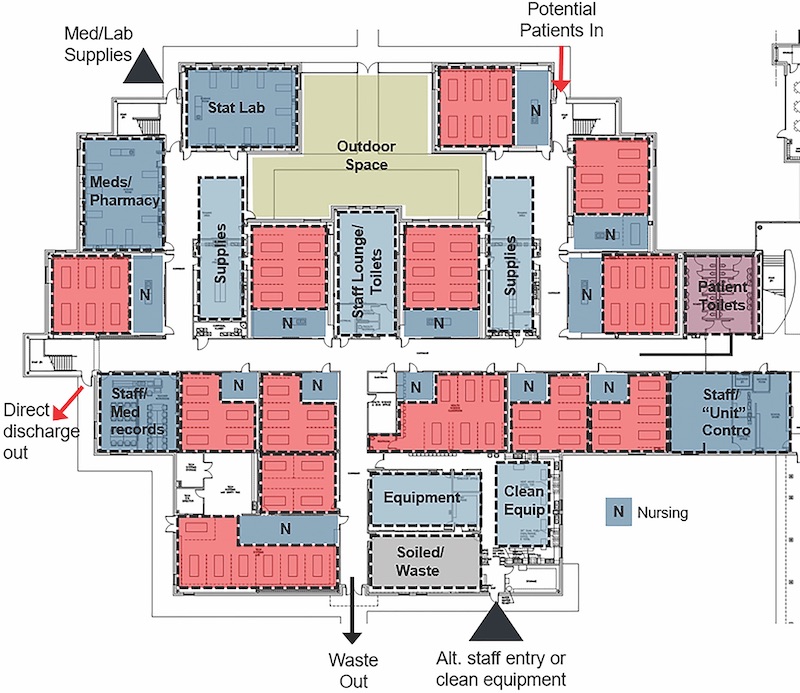
HKS and MEP engineer Mazzetti collaborated on designs for converting sections of a high school, such as a classroom wing or gym, to patient care space with between 70 and 80 beds.
Vincent Ricevuto, Senior Vice President with WSP, who sits on ASHRAE’s Standard-170 committee for healthcare facilities, added that the society has recently considered guidelines for creating negative pressurization in temporary healthcare structures, and updating its healthcare cleaning protocols. The latter follow Centers for Disease Control and Prevention (CDC) guidelines, says Traci Hanegan, PE, FASHRAE, HFDP, LEED AP, a Principal and Mechanical Engineer with Coffman Engineers, who chairs ASHRAE’s committee on healthcare facilities, and was past-chair of the society’s infectious diseases subcommittee.
Jeff Harris, PE, LEED AP, Director of Engineering with multidisciplinary design firm HGA, says that debates about relative humidity date back to the 1980s. Kurt Spiering, FAIA, ACHA, HGA’s Healthcare Market Sector Leader, also notes that clients seem receptive lately to letting more fresh air into buildings: one of the firm’s healthcare clients in the Midwest has a facility that’s 100% outside air/100% exhaust.
For decades, the conventional wisdom has been that a building’s tightness equates to its energy efficiency. That notion is being reconsidered as part of the larger conversation around infection control.
“There has always been a tension between the need for fresh air and the use of energy; it is not new under COVID-19,” says Fiona Cousins, PE, LEED Fellow, Principal and Digital Services Leader with Arup. She asserts that these don’t need to be mutually exclusive, and that energy efficiency and greater fresh airflow are achievable within LEED and WELL Building standards via control systems that keep CO2 within acceptable limits while balancing the amounts of outside air and energy used.
On the cusp of a transformation
During the pandemic, several companies, including some AEC firms, deployed 3D printers to make protective face shields for healthcare workers. If anything, the COVID-19 event reinforced the centrality of technology and the industry’s agility to respond to such crises. Some examples:
• Robots that project UV rays to decontaminate rooms are being used in hospitals’ surgical theaters. “It’s like a Roomba,” says Christopher Naughton, AIA, ACHA, HMC Architects’ Principal, Healthcare Practice Leader, and Healthcare Planner.
• Jordan Goldstein, FAIA, FIIDA, LEED AP, Gensler’s Principal and Global Design Co-Leader, observed that the pandemic renewed interest in existing technologies. He spoke specifically about “breathable skin,” which Gensler used, to great acclaim, on the Tower at PNC Plaza project in Pittsburgh, which opened in 2015.
• If more students get used to online education, faculty could be called upon to conduct hybrid classes online and in-person simultaneously, which would present audiovisual and bandwidth challenges, says SmithGroup’s Purdy.
• Telemedicine and telehealth are finally getting their due. All of the major healthcare systems are setting up telehealth delivery platforms, says WSP USA’s Rome. Adeleh Nejati, PhD, AIA, LEED AP, WELL AP, EDAC, Healthcare Architect and Researcher with HMC Architects, says that her sister, who works for the Stanford healthcare system in California, told her that Stanford’s CEO had sent out video messages stating that telehealth was saving lives.
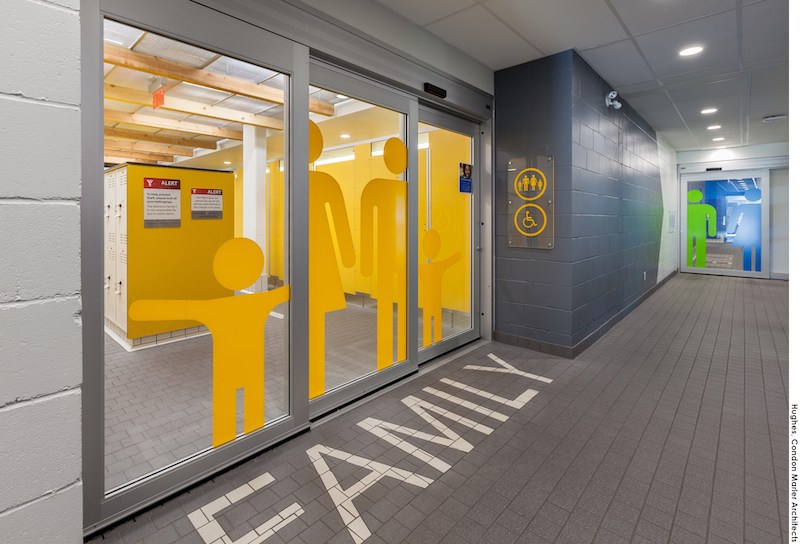
A recent upgrade of the YMCA in Kelowna, British Columbia, designed by Hughes Condon Marler Architects, approaches touchless entry and handwashing as infrastructure and behavioral issues. Photo: Yuri Akuney, courtesy Stantec
Arup Principal Tom Wilcock thinks that the virus could be an accelerant for a “digital transformation” within the construction industry that manifests itself in ways that improve work processes, design, construction, and operations.
Arup has developed digital tools to help building owners think about what changes they should make. One of these, called Mass Motion, tracks how people move within certain spaces, and can be used to benchmark social distancing and for identifying people within crowds who might be ill.
“The entire digital platform and bandwidth will become very big deals,” says Stantec’s Lee. “Anything that can be digitized can be virtualized.” She foresees artificial intelligence being integrated more into building technology, something that Stantec’s headquarters in Edmonton, Alberta, is currently piloting.
COVID-19 pushes building owners into the healthy buildings market
In a post-pandemic world, say AEC sources, the public is going to expect significantly higher levels of commercial cleaning and sanitation, with the new paradigm being “health and economy, instead of health versus the economy,” stated Sundar Nagarajan, Americas Lead for JLL Consulting, during a webinar on “preparing for re-entry and reimagining the workplace” he conducted with Peter Miscovich, JLL’s Manager Director of Strategy and Innovation.
For K-12 schools, that’s going to mean “a hyper-focus on hygiene,” says Fanning Howey’s Payne. Material selections for touchable surfaces will be vetted for their bacterial- and microbial-resistant qualities. Air delivery systems will be evaluated for humidity control and filtration. “We must provide fewer doors, more space to maneuver, and greater access to touchless fixtures.”
ALSO SEE: Infection control in office buildings: Preparing for re-occupancy amid the coronavirus
Nelson Worldwide does a lot of projects that have large gatherings of people, like The Battery district in Atlanta and the 400-acre mixed-use Riverton complex in Sayreville, N.J. “The big question is, How do you protect all of the people in these places?” asks Wakefield. His firm has already had conversations with the Atlanta Braves, which owns The Battery, about using different antimicrobial products for cleaning. Nelson Worldwide has also looked into different cleanable furniture options for Riverton.
Wakefield predicts that buying tickets and concessions at sporting events will be voice activated, and that entrances and exits at arenas and stadiums will be door-less or automated to avoid touches.
Reconsidering resilience in a post-pandemic market
An aggressive cleaning regimen can be viewed through a prism of resilience, a word that has gained new meaning in light of the virus’ spread and economic impact.
“Our societal resilience is being tested,” says WSP’s Cornell. “We’re seeing a renewed interest in what it means to be resilient,” says Rachel Bannon-Godfrey, Principal and Discipline Leader: Sustainability–Buildings with Stantec. The pandemic “opened up” conversations around resilience, with clients more interested in taking a holistic approach to managing buildings, says Heather Rosenberg, Associate Principal and Resilience Leader–Southern California with Arup.
But if they’re right, what does the country’s haphazard response to the coronavirus’ spread say about its ability and will to react to future—and potentially more cataclysmic—threats like climate change?
What’s needed now, Rosenberg asserts, is a “multi-hazard plan” because “the current disruption revealed all kinds of points where the systems are weak and disconnected.” Cousins, her colleague at Arup, says that the current shock might give business and political leaders pause to reconsider “what we spend our money on,” and use this opportunity to reshape societal priorities.
Are leaders and the public ready for that commitment? James Woolum isn’t sure. Woolum, AIA, IIDA, Partner and Interior Architect with ZGF Architects, noted that after the 9/11 terrorist attack, people complained about the government-imposed security at airports. Twenty years later, “it’s part of our lives.”
But when it comes to risk mitigation that’s needed to thwart the impact of future national crises, Woolum fears that the public will get “gaslighted” into believing that the coronavirus was a once-in-a-lifetime blip, just as some people remain convinced that climate change is a hoax, or keep kicking solutions to that problem down the road.
AEC firms, says Woolum, have a responsibility to make sure that tumultuous events like the COVID-19 pandemic “don’t get swept under the rug.”
Related Stories
Healthcare Facilities | Jun 20, 2022
Is telehealth finally mainstream?
After more than a century of development, telehealth has become a standard alternative for many types of care.
Coronavirus | May 20, 2022
Center for Green Schools says U.S. schools need more support to fight COVID-19
The Center for Green Schools at the U.S. Green Building Council released a new report detailing how school districts around the country have managed air quality within their buildings during the second year of the COVID-19 pandemic.
Industry Research | Mar 9, 2022
Survey reveals five ways COVID-19 changed Americans’ impressions of public restrooms and facilities
Upon entering the third year of the pandemic, Americans are not only more sensitive to germs in public restrooms, they now hold higher standards for the cleanliness, condition and technology used in these shared spaces, according to the annual Healthy Handwashing Survey™ from Bradley Corporation conducted in January.
Codes and Standards | Feb 21, 2022
New standard for ultraviolet germicidal irradiation
The Illuminating Engineering Society (IES) recently introduced the standard, ANSI/IES RP-44-21 Recommended Practice: Ultraviolet Germicidal Irradiation.
Coronavirus | Jan 20, 2022
Advances and challenges in improving indoor air quality in commercial buildings
Michael Dreidger, CEO of IAQ tech startup Airsset speaks with BD+C's John Caulfield about how building owners and property managers can improve their buildings' air quality.
Coronavirus | Jul 20, 2021
5 leadership lessons for a post-pandemic world from Shawmut CEO Les Hiscoe
Les Hiscoe, PE, CEO of Shawmut, a $1.5 billion construction management company headquartered in Boston, offers a 5-point plan for dealing with the Covid pandemic.
Resiliency | Jul 15, 2021
A new report urges federal investment in healthier buildings
The National Institute of Building Sciences also calls for code changes and greater cooperation between building owners and the AEC community.
Multifamily Housing | Jul 7, 2021
Make sure to get your multifamily amenities mix right
One of the hardest decisions multifamily developers and their design teams have to make is what mix of amenities they’re going to put into each project. A lot of squiggly factors go into that decision: the type of community, the geographic market, local recreation preferences, climate/weather conditions, physical parameters, and of course the budget. The permutations are mind-boggling.
Multifamily Housing | Jun 30, 2021
A post-pandemic ‘new normal’ for apartment buildings
Grimm + Parker’s vision foresees buildings with rentable offices and refrigerated package storage.
Multifamily Housing | Jun 23, 2021
COVID-19’s impact on multifamily amenities
Multifamily project teams had to scramble to accommodate the overwhelming demand for work-from-home spaces for adults and study spaces for children.


